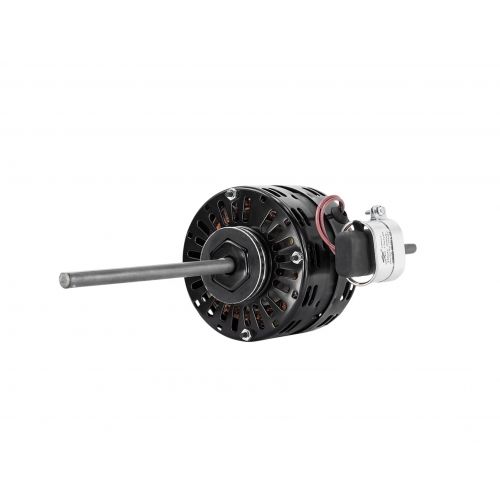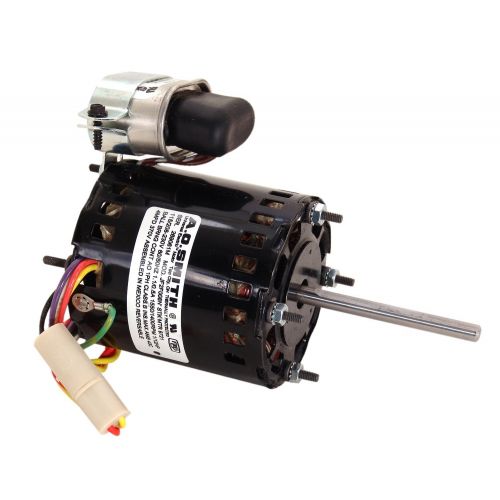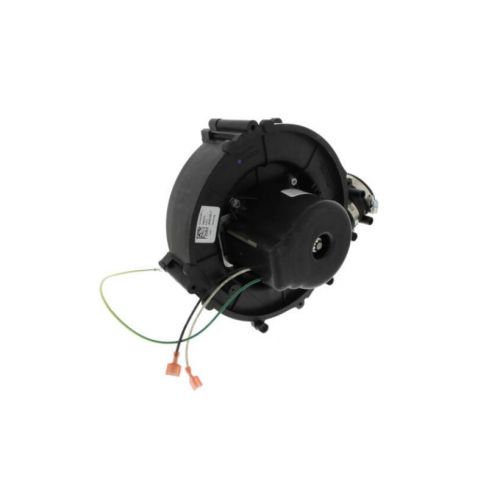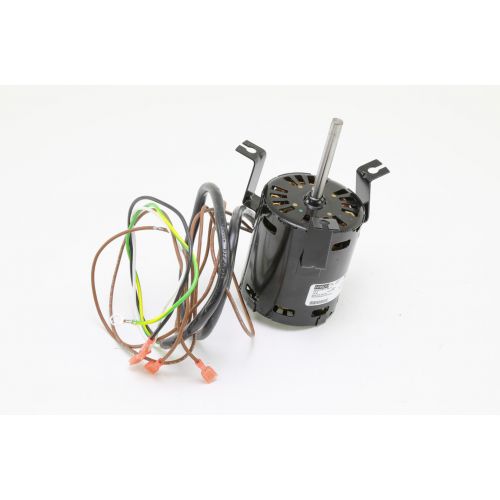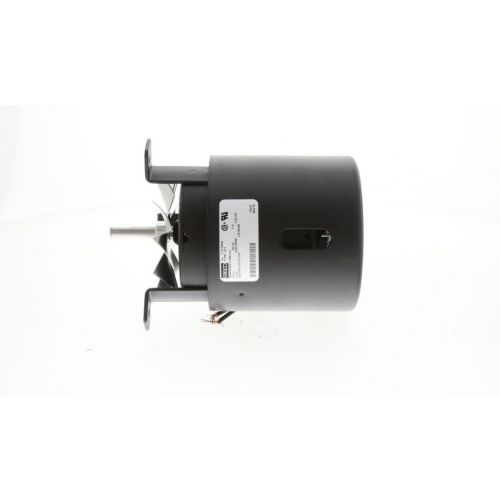What is a Fasco Inducer Motor and Why It Matter
The inducer motor plays a vital role in the functioning of your HVAC system by ensuring proper airflow and ventilation. If your system isn't performing optimally, the inducer motor could be the culprit. Issues like strange noises, failure to start, or inconsistent airflow are common signs of a malfunctioning motor. Identifying and fixing these problems quickly is essential to avoid further complications and costly repairs. In this guide, we’ll walk you through the troubleshooting steps for a Fasco inducer motor, covering common issues and their solutions. With the right tools and knowledge, you can address these problems on your own and get your HVAC system back to peak performance.
What is a Fasco Inducer Motor and Why It Matter
The Fasco inducer motor functions as an essential part in HVAC systems, particularly within furnaces and boilers. The Fasco inducer motor functions as a key component by enabling airflow control through system entry and combustion support, and safe exhaust gas removal through the venting system. Through vacuum creation, the inducer motor enables proper airflow to the heat exchanger while effectively removing dangerous gases from the system. The operation of your HVAC system depends heavily on a working inducer motor because it ensures the proper airflow needed for heating and cooling functions.
The Fasco draft inducer motor serves two essential purposes by enabling system performance and maintaining system safety. A defective inducer motor creates problems that include inadequate combustion and insufficient airflow, and complete system shutdowns. The system can develop dangerous gas accumulation, including carbon monoxide, when a failure occurs. The system operates efficiently and prevents expensive maintenance through regular maintenance, together with prompt defect identification. The early detection of strange noises and irregular airflow, and system startup problems in an inducer motor helps prevent bigger system failures while maintaining proper HVAC unit operation.
Looking for high-quality HVAC parts? At PartsHnC, we offer reliable components from top brands like Fasco, Trane, Carrier, and Rheem. Explore our wide selection of furnace parts, including inducer motors, circulating fans, gas valves, and heat exchangers, to keep your system running smoothly.
Signs Your Fasco Inducer Motor is Failing
Your HVAC system depends on the inducer motor to maintain proper airflow and combustion functions. Your heating or cooling performance suffers from various problems when your HVAC inducer motor begins to fail. The following indicators signal a failing inducer motor:
-
Strange Noises: Grinding noises, along with squealing and rattling sounds, indicate that bearings or fan components have worn out. Motor performance suffers from debris accumulation that produces friction, which eventually results in additional damage when maintenance is delayed.
-
Poor Airflow: The failure of an inducer motor results in poor airflow, which produces weaker vent output and creates uneven temperature distribution. The HVAC system must operate at a higher capacity to maintain performance, which decreases both efficiency and comfort levels.
-
Frequent Cycling: The system will short cycle and overheat when the inducer motor fails to maintain proper airflow, which results in frequent cycling operations.
-
Error Codes or System Shutdowns: The failure of an inducer motor leads to system shutdowns and displays error codes in numerous HVAC systems. A “pressure switch” error indicates motor problems that need professional inspection to diagnose.
-
Increased Energy Bills: A defective inducer motor forces the system to operate less efficiently, which results in increased energy costs for heating maintenance. The inefficient operation of the system requires additional energy consumption, which results in elevated utility expenses.
Safety Precautions Before You Start Troubleshooting Fasco Inducer Motor
Safety measures must be taken before starting any troubleshooting or repair work on your Fasco inducer motor to prevent injuries and HVAC system damage. Here are the key steps to follow:
-
Turn Off Power: Start every HVAC maintenance process by disconnecting the power supply. You can disconnect power through two steps: first, turn off the thermostat, and then disable the main electrical panel. Working on the motor becomes safer because power disconnection prevents electrical hazards.
-
Wear Protective Equipment: You should use gloves together with safety goggles for your protection. The motor, along with its components, contains sharp elements with dust and debris that exist and threaten your eyes and hands.
-
Check for Electrical Issues: Start by inspecting the wiring area for exposed or frayed wires before attempting any contact with electrical components. Professional electrician consultation is needed when you notice any damage to wiring because electrical shocks can occur.
-
Allow the System to Cool Down: Wait for your HVAC system to reach normal temperature before starting any repair work. The inducer motor, along with other components, reaches high temperatures, which can result in burns if you handle them before they cool down.
-
Follow Manufacturer Guidelines: You must review the manufacturer's instructions since their manual contains required troubleshooting procedures. The manufacturer's guidelines provide both proper procedures and protection against warranty voidance.
These safety measures you take will help you perform troubleshooting tasks effectively on your Fasco inducer motor.
Check out this guide on inspecting your furnace flue pipe for any blockages or issues in your furnace, and make sure to follow proper safety procedures. While maintaining your system.
How to Troubleshoot Inducer Motor Issues in Fasco Furnace
The process of checking for problems with your Fasco furnace inducer motor enables you to detect and solve minor issues before they cause significant system breakdowns. Follow these steps to complete furnace inducer motor troubleshooting:
Noisy Inducer Motor
Worn bearings, together with a misaligned fan or motor obstruction by debris, will produce grinding noises and squealing, and rattling sounds.
Solution: Begin by switching off the power, then cleaning the motor to eliminate dust and debris. It is necessary to check motor bearings and fans for damage after noises persist. The motor or its components require replacement when the problem continues to exist.
Weak or No Airflow
The system efficiency decreases when the inducer motor fails to operate correctly.
Solution: Check for any objects that could block the motor's intake or exhaust. Check the motor for dirt, then verify that all electrical connections remain secure. The motor requires replacement or repair when airflow problems persist. Check the gas valve for potential causes when airflow problems continue.
Furnace Not Starting or Cycling Incorrectly
Your furnace may fail to start or repeatedly turn on and off when the inducer motor develops a malfunction.
Solution: Inspect the motor’s electrical connections for loose wires or corrosion. A multimeter should be used to inspect the capacitor for any possible defects. Check all electrical connections for tightness before replacing the capacitor unless the problem persists, which indicates the motor requires replacement. Check the thermocouple for potential problems.
Inducer Motor Stops Running After a Short Period
A fast shut-off of the inducer motor signals possible overheating or internal breakdown of the system.
Solution: Check the motor for blockages while inspecting for overheating signs and maintain proper ventilation. Examine all electrical components, starting from wiring to connections. A professional inspection or replacement of the motor should be considered when it keeps shutting off.
Error Codes or Furnace Shutdown
The inducer motor stands as the primary cause when error codes appear or when the furnace shuts down.
Solution: Follow the furnace manual instructions to decode error codes and perform the appropriate troubleshooting steps. Check the inducer motor for cleanliness before inspecting all its connections for proper attachment. The error requires replacement of the motor or professional assistance for additional diagnostic procedures.
These steps will guide you through effective troubleshooting of Fasco furnace inducer motor problems.
How to Replace a Faulty Fasco Inducer Motor
The replacement of faulty Fasco inducer motors demands both detailed work and safety precautions. This guide provides step-by-step instructions to replace the motor.
-
Turn Off the Power: The first step requires power disconnection from both the thermostat and the main electrical panel. The system remains protected from electric shock risks throughout the work process because power is disconnected at both the thermostat and main electrical panel.
-
Remove the Furnace Access Panel: You need to open the access panel on the furnace to view the inducer motor. You must detach the panel of your furnace by using a screwdriver or wrench to remove screws or fasteners based on your furnace model.
-
Disconnect the Wiring: Take a picture or make notes of the motor wiring before disconnection to properly reconnect it later. The removal process requires careful disconnection of the motor's electrical wires to prevent any damage to the wires.
-
Remove the Faulty Motor: The inducer motor remains fastened through bolts or screws. A wrench or screwdriver should be used to detach the mounting bolts, which will release the motor from its housing. An inspection of the Fasco inducer motor gasket should be performed to check for wear or damage that requires replacement to avoid air leakage.
-
Install the New Motor: Insert the new inducer motor into the motor housing while confirming it fits properly. Secure the motor using the mounting bolts before reattaching the fan if you removed it. Reestablish the wiring connections according to the earlier notes or photos you took to verify the correct wiring setup.
-
Test the New Motor: Turn the power back on after completing the new inducer motor installation and securing all components to test the furnace. Listen for any abnormal sounds such as grinding or squealing, while checking that the motor operates with proper airflow.
The Fasco inducer motor replacement remains easy for those who proceed with caution yet consulting a professional HVAC technician becomes necessary when you feel uncertain about any step.
Check out this detailed guide on thermocouple inspection and replacement to learn how to inspect and replace the thermocouple in your furnace to ensure optimal performance.
Preventive Maintenance Tips to Extend Fasco Inducer Motor Life
Regular maintenance of Fasco inducer motors extends their operational life while simultaneously boosting HVAC system performance. The following essential preventive measures will help maintain the smooth operation of your inducer motor:
-
Regular Cleaning: Dust and dirt particles, together with debris, accumulate within the motor components and motor itself, which leads to increased friction and component wear. Regular cleaning of the motor should include vacuuming or blowing compressed air to eliminate accumulated debris.
-
Lubricate Moving Parts: The moving parts inside inducer motors deteriorate because of friction during regular operation. The manufacturer provides guidelines for applying lubrication to fan blades and moving components. The user should apply lubrication to the moving parts to both decrease wear and enhance motor stability and operational quietness.
-
Check Electrical Connections: Regular inspections should check the electrical connections for proper security and the absence of corrosion. Motor failure alongside poor performance occurs when wires become loose or corroded. Check and secure all electrical connections by tightening or replacing damaged ones.
-
Inspect the Ventilation System: Check that no obstacles exist in the furnace ventilation system. The inducer motor must work harder when blockages occur, which causes overheating and reduces its operational efficiency. Regular cleaning of ducts and vents will maintain proper airflow through the heating system.
-
Schedule Professional Inspections: Regular professional inspections need to occur annually to enable technicians to find problems during their early stages when issues start to develop. Regular maintenance checks your inducer motor system condition, which may help you avoid expensive inducer motor replacement costs.
The longevity of your Fasco inducer motor and HVAC efficiency will grow when you implement these preventive steps.
Your HVAC system depends on the Fasco inducer motor to maintain proper airflow and combustion while safely removing gases from the system. You can prevent expensive repairs by diagnosing problems through troubleshooting of strange noises and poor airflow, and system shutdowns. You need to maintain the motor regularly through motor cleaning and electrical connection checks, and lubrication verification to achieve longevity of the motor unit and system performance enhancements. Professional technicians should be contacted whenever you feel uncertain about making repairs or replacements. Your Fasco inducer motor will maintain efficient operation and ensure home or business safety through prompt maintenance and proactive issue resolution.
FAQs
How do you know if your Fasco inducer motor is bad?
A bad Fasco inducer motor can cause unusual noises, error codes, poor airflow, burning smells, overheating, or increased energy bills. You can also check for signs like the motor not spinning or a locked-up shaft.
Why is my Fasco inducer motor humming but not spinning?
A humming Fasco inducer motor that doesn't spin often indicates a problem with the starting capacitor or a seized motor.
How to check if a Fasco inducer motor is getting power?
To check if a Fasco inducer motor is getting power, disconnect the wires from the motor, set your multimeter to AC volts, and measure the voltage at the terminals while the furnace is calling for heat.
What is the life expectancy of a Fasco inducer motor?
Fasco inducer motors, typically found in furnaces, have an average lifespan of 10 to 20 years, but this can vary depending on factors like usage and environmental conditions.



